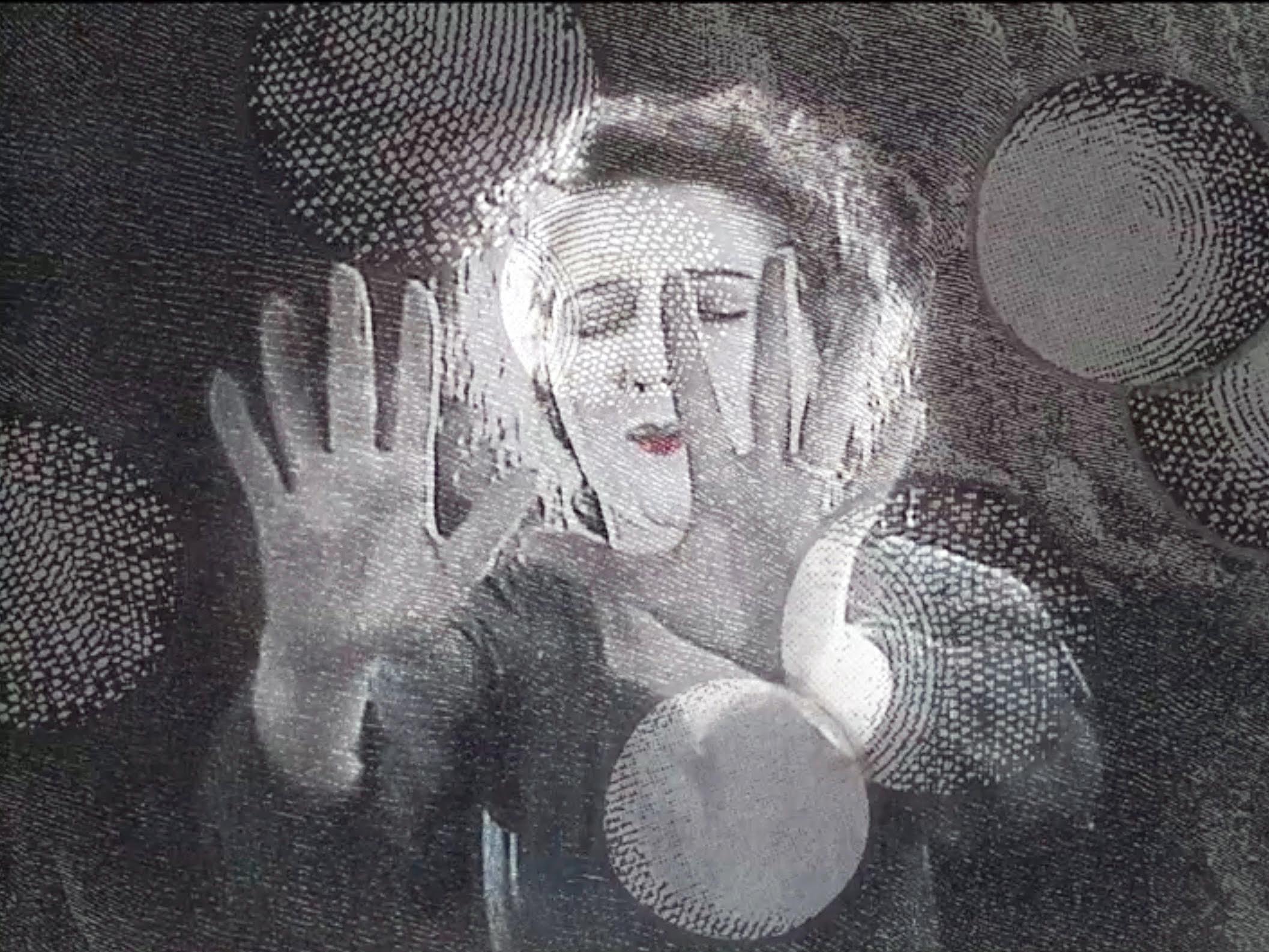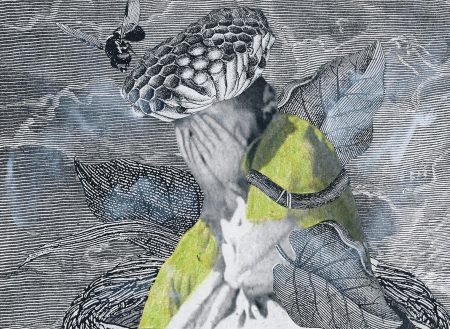This week, we are excited to welcome back graduate student Julia Sharpe to write for us! Sharpe’s essay looks at Stacey Steers’ surreal films, which explore the inner-lives of women, meditating on fraught relationships, motherhood, medicine, and death.

Whispering, dropping, digging, buzzing… A page peels back and a rose rapidly blooms and decays; the forest opens up into a cave which opens into a laboratory; the macabre flora and fauna grow and retract; tubes and beakers carry an elixir up from the earth. Everything is breathing, wheezing but living. Within a cottage of incubating eggs, one heroine writes, “strange things are happening here, mother.”
These are the shapeshifting worlds of Stacey Steer’s collaged trilogy Phantom Canyon (2006), Night Hunter (2011) and Edge of Alchemy (2017). Each iteration of the trilogy combines victorian engravings, drawing, painting and an appropriated female figure of the silent film era: Lillian Gish, Mary Pickford, Janet Gaynor and an unnamed figure from Eadweard Muybridge’s Human and Animal Locomotion. Each film is nearly black and white except for the sparse reds, greens and blues added to the female figures and the entities that haunt them. There is no oral language in this world, but rather an ambient chorus of sighs and whispers amidst the whistling wind and rustling forest. The result is an answer to the question: what are these women experiencing in their silence?

Separate, but united formally, each film evokes an internal/personal creation myth that pivots around the transformative nature of longing for another, nostalgia for what has been experienced and longing for possibility. Insects, serpents, eggs, vegetation, bed frames, laboratory equipment become physical embodiments of desire and fear. Manifestations of the imagination that are the result of experience outside of the body become lived experience within the psyche. Silence becomes the presence of an imaginative internalization of exterior experience.
In this way, when Lillian Gish’s figure in Night Hunter writes “strange things are happening here, mother” she invokes each layer of the self: the physical body in space, and the space created by the internal psyche through which feelings manifest as lived experience. Such that an incubating egg in the psychic space becomes an allegory for something happening to the physical body. This triple space contains terrors and pleasures, fears and desires, longing for separation and communion. What feels particularly acute about the convergence of these spaces in Steers’ work is the simultaneous collision of domestic and feral space within the terrain. Further, that such a collision has the power to haunt, comfort or turn against these female figures; but that such power is only enacted by way of the figures’ own thought patterns. Because each system is closed, the female figures appear to be enacting these terrific dreams upon herself.
Thus, our answer to the question, what are these women experiencing in their silence, seems to be an evocative, personal and perpetual self-transformation, one that is strange, beautiful, terrific and tied inextricably to femaleness.
